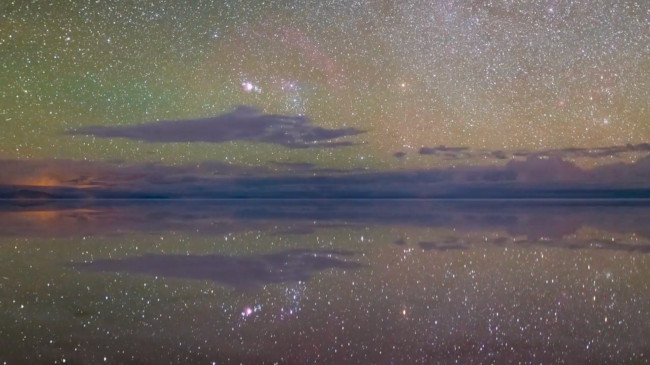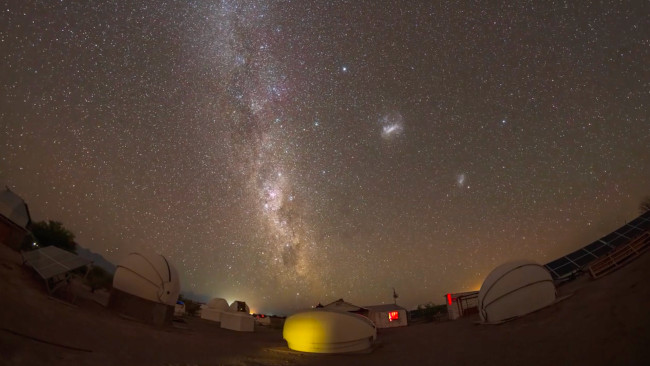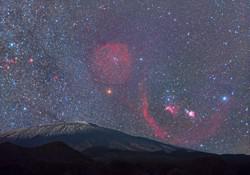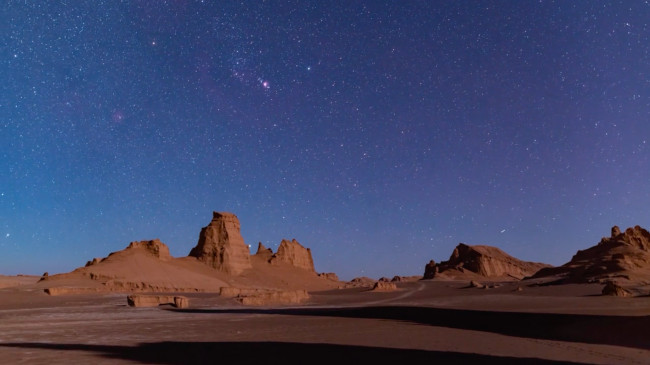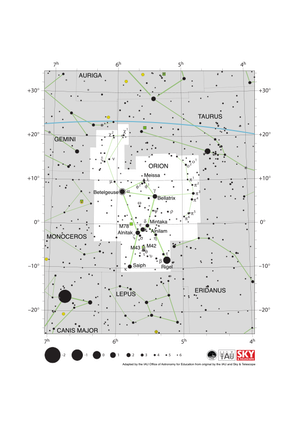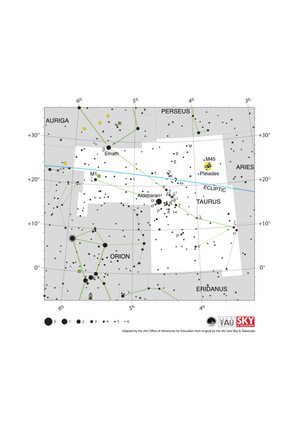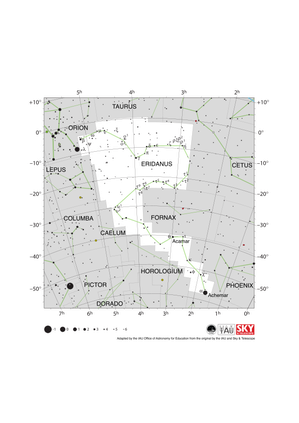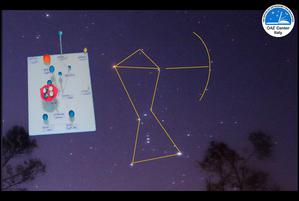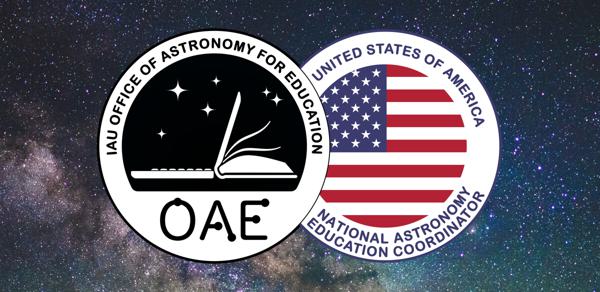Glossary term: Orion
Description: Orion est une constellation facilement reconnaissable près de l'équateur céleste. Dans l'hémisphère Nord, c'est une constellation proéminente d'hiver ; dans l'hémisphère Sud, c'est une constellation proéminente d'été. Dans le mythe Grec, Orion était un chasseur, et les principales étoiles de la constellation sont généralement interprétées comme représentant les épaules d'Orion, sa ceinture, l'épée accrochée à sa ceinture, et ses deux pieds. La plupart de ces étoiles sont des géantes bleues ou des supergéantes, c'est-à-dire des étoiles bleuâtres particulièrement brillantes qui se trouvent aux derniers stades de la vie stellaire. L'étoile de l'épaule gauche, Bételgeuze, est une supergéante rouge, c'est-à-dire une étoile rouge très brillante en phase finale de sa vie. Sa couleur rougeâtre est facilement visible dans le ciel nocturne. L'épée d'Orion contient la nébuleuse d'Orion. À l'œil nu, il s'agit d'une tache blanchâtre. Les télescopes astronomiques ont montré qu'il s'agit d'un nuage rouge vif de gaz d'hydrogène où naissent actuellement de nouvelles étoiles.
Related Terms:
See this term in other languages
Term and definition status: The original definition of this term in English have been approved by a research astronomer and a teacher The translation of this term and its definition have been approved by a research astronomer and a teacher
The OAE Multilingual Glossary is a project of the IAU Office of Astronomy for Education (OAE) in collaboration with the IAU Office of Astronomy Outreach (OAO). The terms and definitions were chosen, written and reviewed by a collective effort from the OAE, the OAE Centers and Nodes, the OAE National Astronomy Education Coordinators (NAECs) and other volunteers. You can find a full list of credits here. All glossary terms and their definitions are released under a Creative Commons CC BY-4.0 license and should be credited to "IAU OAE".
If you notice a factual or translation error in this glossary term or definition then please get in touch.
Related Media
Constellations from the World
Credit: Stephanie Ye Ziyi/IAU OAE
License: CC-BY-4.0 Creative Commons Attribution 4.0 International (CC BY 4.0) icons
Chilean Nights
Credit: Robert Barsa/IAU OAE
License: CC-BY-4.0 Creative Commons Attribution 4.0 International (CC BY 4.0) icons
Orion Rises Over Mount Etna
Credit: Dario Giannobile/IAU OAE
License: CC-BY-4.0 Creative Commons Attribution 4.0 International (CC BY 4.0) icons
Winter Constellations
Credit: Amirreza Kamkar/IAU OAE
License: CC-BY-4.0 Creative Commons Attribution 4.0 International (CC BY 4.0) icons
Les étoiles les plus brillantes du ciel
Credit: Giorgia Hofer/IAU OAE
License: CC-BY-4.0 Creative Commons Attribution 4.0 International (CC BY 4.0) icons
Related Diagrams
Orion Constellation Map
Credit: Adapted by the IAU Office of Astronomy for Education from the original by IAU/Sky & Telescope
License: CC-BY-4.0 Creative Commons Attribution 4.0 International (CC BY 4.0) icons
Taurus Constellation Map
Credit: Adapted by the IAU Office of Astronomy for Education from the original by IAU/Sky & Telescope
License: CC-BY-4.0 Creative Commons Attribution 4.0 International (CC BY 4.0) icons
Eridanus Constellation Map
Credit: Adapted by the IAU Office of Astronomy for Education from the original by the IAU and Sky & Telescope
License: CC-BY-4.0 Creative Commons Attribution 4.0 International (CC BY 4.0) icons
Related Activities
Orion constellation in 3D
astroEDU educational activity (links to astroEDU website) Description: Let's make a simple model of the Orion constellation
License: CC-BY-4.0 Creative Commons Attribution 4.0 International (CC BY 4.0) icons
Age Ranges:
8-10
, 10-12
Education Level:
Primary
Areas of Learning:
Guided-discovery learning
, Modelling
, Social Research
Costs:
Low Cost
Duration:
2 hours
Group Size:
Group
Skills:
Analysing and interpreting data
, Asking questions
, Developing and using models
